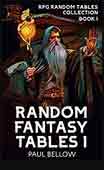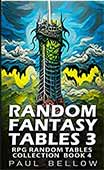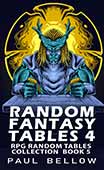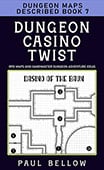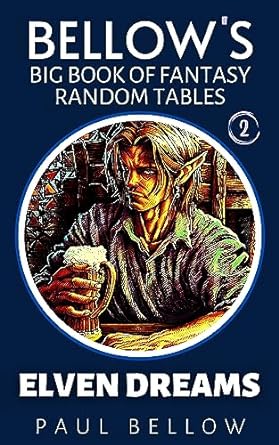Wizards’ archives overflow with the clattering bones of forgotten stories. Flickering between pages heavy with promises and woe, Dungeon Masters seeking more than charted dragon-haunts or over-polished lich kings find a gold-veined seam in the old, dog-eared novels passed over since the boxed sets yellowed. Hidden worlds slumber there, their jagged edges unsanded by popular retelling, waiting for a careful hand to twist a campaign’s reality in directions the core rulebooks can only nod at in passing. Beneath their cover art and pulpy chapter headings, these books spill artifact-laden depths behind the tapestry of standard D&D, offering more than a handful of names or spells to drop in a session. They expose seams of society, glimpses of what truly makes a world breathe and bleed.
Secret histories and lesser known characters, their relevance deemed spent by the tides of pop culture, crust the back shelves. Yet, to those who pry open these overlooked tales, astonishing black-market details become available. Imagine trade in necromantic spice along the Black Road of Thay, or city thieves who measure life by the length of a lie in Sembia’s back alleys. These are not mere alternatives to the iconic mythos; they are keys to expanding the very frameworks upon which campaigns are hung, offering unfamiliar cultural textures and new windows into how stories unfold between player and setting.
Campaign immersion blooms not from rehashed tropes but from surprise; the spiced tang of a city’s undercurrent, the crumbling grandeur of a civilization never mentioned in guidebooks, the pain of a villain whose wounds the sun never heals. Lesser-known novels breathe odd flavors into encounters, snatched from the ashes of barely read pages. Their heroes and villains, neither luminous nor purely depraved, bring tangled motives, institutions, and customs that could upend the routine cycle of quest-giving and monster-bashing. For Dungeon Masters and players alike, these tales provide a creative arsenal far richer than the printed modules most have memorized since high school.
This guide will wander through myriad D&D tie-in novels and near-canon oddities, each one holding a singular lesson in fresh D&D worldbuilding. Expect practical insights: how to inject necromancy politics into your undead-laden adventures, ways to pull courtroom drama and betrayal into a kingdom torn by civil war, and when to unearth the tension between reality and fantasy in a haunted suburb. Each featured work becomes a tool, a prism to twist your campaign’s light. What follows is a gateway to secrets ignored by the mainstream, yet perfectly poised to inject new colors into your gaming table’s tapestry.
- Why Forgotten Novels Make Great Worldbuilding Resources
- Spotlighting the Overlooked: Why Reach for the Forgotten Stacks?
- The Haunted Lands Trilogy by Richard Lee Byers (Forgotten Realms)
- Birthright Series (Various Authors)
- Chronicles of Athas (Dark Sun)
- I, Strahd by P.N. Elrod (Ravenloft)
- Knight of the Black Rose by James Lowder (Ravenloft)
- The Cloakmaster Cycle (Spelljammer)
- White Plume Mountain by Paul Kidd (Greyhawk)
- Daughter of the Drow (Forgotten Realms)
- The City of Ravens (Forgotten Realms)
- Planescape: Torment by ShadowCatboy (Planescape)
- Darkwalker on Moonshae (Moonshae Isles Trilogy, Forgotten Realms)
- Venom in Her Veins (Forgotten Realms)
- HOBGOBLIN by John Coyne
- Integrating Novel Inspirations into Your Campaign
- Final Thoughts on Overlooked DND Novels and Worldbuilding
Why Forgotten Novels Make Great Worldbuilding Resources
Obscure novels rarely linger in the marketplace, crowded out by showstoppers with established fanfare and movie tie-ins. Their obscurity proves their strength. Untouched by the sanding wheel of mass appeal, they wander freely into corners unlit by bestselling campaigns. Here, writers obsessed with necromancers, or lost monarchs, or the slow erosion of a moonlit coastline, explore themes too weird or singular for major publications. The result: microcosms that pop and seethe, ripe with narrative flavors that seasoned DMs crave but seldom find in well-trodden modules.
Neglected corners mean no one’s mapped the shadows. In these novels one can find dense cityscapes where thieves guilds outmaneuver would-be heroes with contracts more binding than any spell, or wilds where survival depends on relationships between desperate hermits and forgotten gods. Cultures bloom with careful specificity: funeral rites shaped by centuries of war with the undead, merchant houses ruled by secret heirs, transgender knights whose oaths rewrite the rules of chivalry. Every page goes overlooked by the uninitiated, but those who look see entire regions ready to be pilfered and reimagined. This offers fresh culture, politics, and drama for tables that hunger for something stranger.
Try my AI Tabletop RPG generators...and an extensive library of content!
Players sense when a world’s blood runs thin. Obscure novels, unafraid to puzzle over power’s corruption, the price of necromancy, or the politics of famine, produce more than flavor text. They build frameworks, nuanced hierarchies, grudging alliances, betrayals lurking beneath dialogue. The stories rarely wrap up with deus ex machina or railroaded victory. This narrative ambiguity allows any campaign, no matter how familiar the setting, to become unpredictable again. The result: organic campaign twists, gritty character development, and a world where even a spent copper piece buys a new kind of trouble.
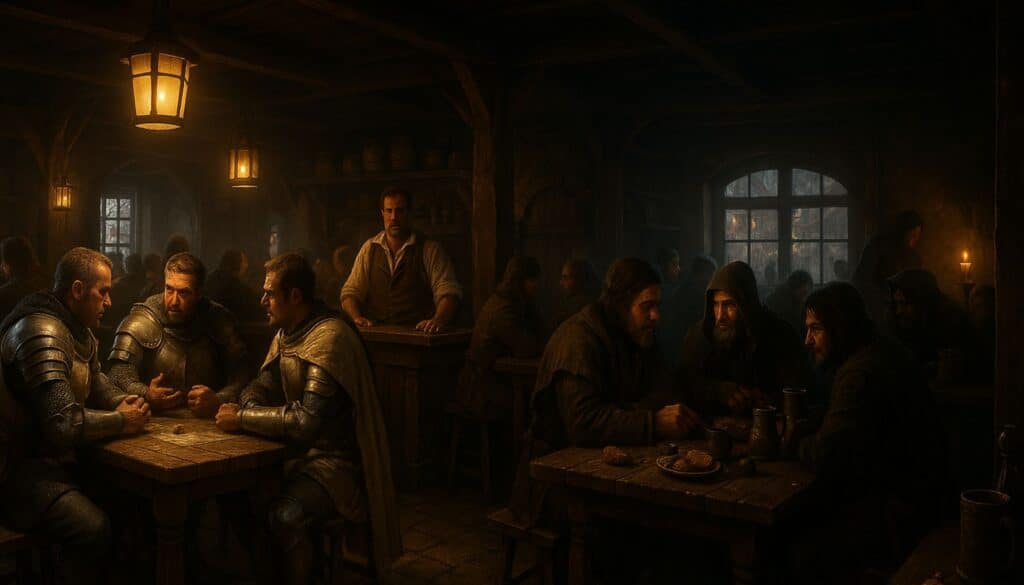
Spotlighting the Overlooked: Why Reach for the Forgotten Stacks?
Buried deep in the library’s shadows and the online bargain bins, these overlooked D&D and D&D-adjacent novels await the curiosity of storytellers hungry for something wilder than mainstream modules. When the same classics begin to feel like a cage, prying into these less-traveled tomes is an act of creative rebellion. Their pages reveal innovative magic systems, deeply flawed protagonists, fragile societies, and glimmering mysteries—each a world seen from an angle official lore rarely dares. The very act of reading them becomes an excavation for campaign gold, unearthing lost inspirations and story seeds no sourcebook footnote can provide.
For Dungeon Masters and players burned out by the expected, choosing these forgotten gems means choosing uncertainty, challenge, and surprise. The authors, free from the twin yokes of franchise expectation and popularity, often crafted stories with sharper risks, richer ambiguities, and more dangerous choices. These are books that refuse to give you the answers; they demand you wrest them from the text and twist them for your own campaign needs. Each turns the act of worldbuilding into an adventure in itself, scattering hints and promises in every haunted alley and echoing throne room.
| Novel/Series | Why Read It | (Unexpected Worldbuilding Payoff) |
|---|---|---|
| Haunted Lands Trilogy | Bureaucratic necromancy, apocalyptic politics | Develops a nuanced undead society with fragile alliances |
| Birthright Series | Bloodline-driven politics, low-magic realism | Subtly integrates economics, famine, and personal stakes |
| Chronicles of Athas | Post-apocalyptic survival, psionic societies | Inverts essential comforts—forces parties to earn every resource |
| I, Strahd | Villain as protagonist, gothic intimacy | Models sympathetic antagonists and generational curses |
| Knight of the Black Rose | Cross-setting displacement, tragic fall of honor | Inspires planar travel with transformative moral consequences |
| Cloakmaster Cycle | Spelljammer’s wacky space-fantasy | Encourages creative design of ships, trade networks, and cosmic cultures |
| White Plume Mountain | Tongue-in-cheek dungeon hijinks | Demonstrates how humor and farce refresh classic adventure formats |
| Daughter of the Drow | Outsider POV, drow redemption arcs | Equips tables for nuanced takes on evil cultures and personal liberation |
| The City of Ravens | Gritty urban intrigue, charming anti-heroes | Provides templates for guilds, gangs, and complex city NPCs |
| Planescape: Torment | Identity, morality, belief-altering reality | Shows how belief and memory can shape entire campaign realities |
| Darkwalker on Moonshae | Celtic folklore, natural magic, island mysteries | Enriches campaigns with living wilderness, fey politics, and tradition |
| Venom in Her Veins | Secret heritage, emotional internal conflicts | Gives practical methods for character-driven plot twists |
| HOBGOBLIN | Meta-horror, moral panic, blurred fantasy/reality | Offers horror tools rooted in social anxiety and urban legend |
Every overlooked novel in this list offers more than just new monsters or plot points. They provide textures and themes, entire worldviews waiting to be reinterpreted at your table. The benefit of reaching beyond the bestseller shelf is clear: these stories challenge DMs and players to ask bigger questions, invent stranger customs, and risk more honest failures and triumphs.
⚔️ Fantasy RPG Random Tables Books
Make life as a Gamemaster easier…
If you play Dungeons & Dragons, Pathfinder, or other fantasy RPGs, this
RPG random tables series
is packed with encounters, NPCs, treasure, and more. Available in eBook or print—either way, you’ll have a wealth of adventure ideas at your fingertips.
Whether you hunger for a campaign shadowed by regret, torn apart by ambition, or healed by laughter, these forgotten worlds will always serve as willing conspirators. Keep your senses keen and your mind open. The stories at the margins—dusty, cluttered, unclassifiable—wait for the brave to step beyond certainty and begin again, forging legends from the relics others discarded.
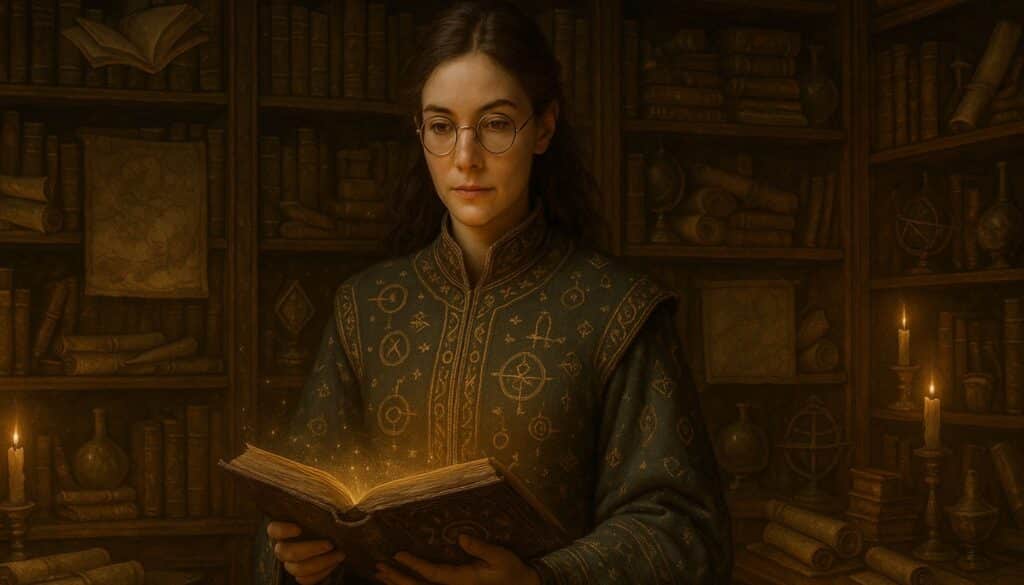
The Haunted Lands Trilogy by Richard Lee Byers (Forgotten Realms)
Inside the crimson citadels of Thay, the dead never sleep. The Haunted Lands Trilogy lounges where other Realms fiction fears to tread: necromancy as office and throne, civilization run by grim magicians jockeying for power, and the constant threat of a world-ending magical apocalypse. Thay’s politics unravel like an endless chess game with animated corpses for pawns. Each chapter nests darker secrets beneath layers of ritual and statecraft, exhuming the truth that sometimes power matters more than life or soul.
Byers’ trilogy entwines itself intimately with the Fourth Edition’s Realms upheaval, giving readers a vista upon catastrophic transformation: the Red Wizards descending like wolves upon their own kin, undead armies dredging ruined fields, and living peasants forced to survive in the crossfire of necromantic excess. The city-states and rural enclaves serve as living maps for DMs who crave settings neither wholly evil nor simple black-and-white. In Thay, the line between oppressor and victim blurs beneath the black sun of ambition.
Players can trail behind exiled necromancers smelling of formaldehyde, dodge cultists whose only allegiance is raw power, and navigate the festering bureaucracy of the Undying. Here, ambition outweighs grace, and the moral barometer spins wild. This setting supercharges any campaign with the haunting, apocalyptic energy of a society in love with death magic, ripe for delving into forbidden pacts and soul-deep betrayals.
Worldbuilding Takeaways: Haunted Lands
- Networked necromantic rituals as a keystone of society
- Sophisticated undead hierarchy: zombies, wights, lich oligarchs, intelligent servant mummies
- Shifting alliances among Red Wizards; fragile coalitions, brutal betrayals
- Day-to-day peasant adaptation to living among the dead
- Secret police composed of construct-hybrids and undead spies
- Legal codes for necromancy: regulated murder, corporal punishment through undeath
- Shadowy resistance factions, revolutionaries, or sympathetic necromancers
- Supernatural famine, plagues, and magical resource scarcity as setting threats
- Apocalypse in progress: magical cataclysms, landscape changes, walking dead armies
- Convoluted family dynasties built on arcane inheritance
Birthright Series (Various Authors)
Wind rattled the banners of Anuire’s endless baronies. The Birthright novels hurl readers into the blood-soaked courts and disputed borders of a world where power lives in the bloodline, not the spellbook. Iron-shod realism replaces flashy magic: here, kings and usurpers bicker in council before ever raising a sword. A D&D world with a ruler’s eye view, where landscape, culture, and alliances drive stories, not dungeons or dragons. Politics claims as many lives as the blade.
Law and legacy collide: You inherit a land, a curse, an ancestral enemy’s grudge. Birthright’s low-magic world forces players and DMs alike to redefine heroism; not with fireballs, but with diplomatic guile, marriage contracts, fortresses maintained in the shadow of ancient myths, and the slow, inexorable grind of empire-building. Warfare simmers with realism, and battle scenes hinge on siegeworks, supply chains, and secret pacts. Magic is rare and deadly, wielded only by those with the right blood or the will to seize it.
For campaign builders tired of random encounters and omniscient monsters, Birthright offers lessons in nuance. Enemies have land, families, objective stakes; peasants revolt not because they are evil, but because they are hungry or oppressed. Court drama moves with the subtle violence of poison in wine or whispers in the shadow of the throne. Even the undead serve as generals or kingmakers, not simply dungeon bosses.
Campaign Ideas from Birthright
- Inheritance wars between rival siblings and bastard heirs
- Low-magic settings where spellcasters are rare, feared, and hunted
- Diplomacy between pirate states: trade deals, shifting allegiances, marriage alliances
- Integration of intelligent undead nobility within the political system
- Border wars fought with conscript armies and limited resources
- Plague, famine, or environmental disaster driving refugee crises
- Ancient bargains haunting modern politics, legendary weapon inheritance quests
- Schemers manipulating royal courts: spies, informants, blackmailers
- Knights and barons forced to choose between crown and conscience
- Regional cults influencing leadership succession or popular revolts
Chronicles of Athas (Dark Sun)
Desolation stretched from the city’s broken gates to the bones of the horizon. Athas roars with the wind that scours flesh from bone, a world where sun-cracked stone replaces green fields, where magic scorches the land and tyrants rule as god-kings. The Chronicles of Athas novels rip open traditional fantasy, jettisoning elves as kindly woodsmen and transforming halflings into cannibalistic survivors. Every decision, every drink of water, feels like hard-won triumph over oblivion.
Survival dominates character motivation, and the land itself proves the deadliest villain. There is no “safe haven” on Athas; unpredictable storms, marauding slavers, warped arcane energies, and monstrous psions shape every step. Trust unravels fast; even companions might crack under pressure, turning on each other over supplies or secrets. The sorcerer-kings’ perverse law presides, but rebellion constantly simmers at the edge of starvation.
DMs can harvest endless campaign fuel here: sand-choked temples, sun temples bristling with obsidian spears, ruins haunted by psionic ghosts, and oasis politics hinging on daily water rations. Resourcefulness trumps brute force, and alliances usually mask hidden knives.
Athas-Inspired Worldbuilding Elements
- Scarcity-driven mechanics: food, water, magic as precious resources
- Monstrous ecology: desert-adapted aberrations, cannibal halflings, mutant giants
- Savage psionic powers and social hierarchies among mind-benders
- Low or “defiled” magic: spellcasting causes ecological damage
- Survival-oriented storylines: starvation, dehydration, environmental hazards
- Rebellions against sorcerer-kings: urban and wilderness guerrilla tactics
- Ancient ruins with deadly traps, curses, and history-flavored rewards
- Gladiator cultures and arena-based social status
- Resource-based economies: obsidian currency, rare metals as status
- Nomadic tribes with history-steeped grudges and oral traditions
I, Strahd by P.N. Elrod (Ravenloft)
Rain lashed the stones of Castle Ravenloft, and the master paced. I, Strahd refuses to sketch villains as simple boogeymen; Elrod’s diary format plumbs the personal, the monstrous, and the tragic in ways that animate the bloodless tropes of gothic horror. Strahd’s humanity seeps between the cracks, and his yearning, regret, and rage bloom into living threats. Dungeon Masters dig deep here: What does it mean for a villain to love, to mourn, to hunger for impossible redemption?
⚔️ Fantasy RPG Random Tables Books
Make life as a Gamemaster easier…
If you play Dungeons & Dragons, Pathfinder, or other fantasy RPGs, this
RPG random tables series
is packed with encounters, NPCs, treasure, and more. Available in eBook or print—either way, you’ll have a wealth of adventure ideas at your fingertips.
Gothic horror transcends jump-scares: dread thickens in the careful unspooling of desire and devastation. The novel’s world comes alive as a place of storms, candlelit corridors, and family curses heavier than iron shackles. NPCs gain tragedy rather than just menace, compelling players to sympathize even as they shudder. Every encounter becomes a test of heart as well as skill.
This intimacy lends campaigns a different texture. Instead of faceless evil, the darkness is personal; a lost family, a haunted rival, a wound that refuses to close. Players must make choices that echo through character arcs, not just through challenge ratings. The Castle’s shadow stretches far beyond Barovia.
Gothic Horror Techniques from I, Strahd
- Layered villains with sympathetic motivations and genuine heartbreak
- Use of diary or epistolary narration for NPCs to reveal secrets and regrets
- Horror embedded in love stories gone wickedly wrong
- Claustrophobic environments: castles, fog-choked villages, sealed crypts
- Generational curses and family tragedies as campaign hooks
- Player-driven moral tension: mercy vs. vengeance dilemmas
- Psychological horror: fear of isolation, madness, memory loss
- NPCs as tragic foils to the PCs, with mirrored histories
- Hauntings rooted in unresolved emotions or forbidden rituals
- Intimate, character-driven stakes (not just saving the world)
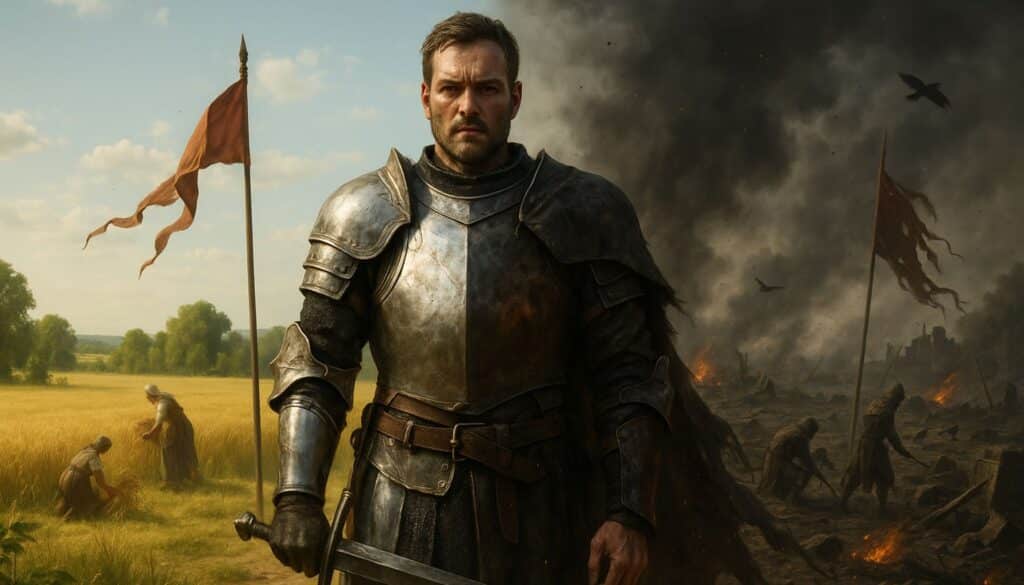
Knight of the Black Rose by James Lowder (Ravenloft)
His armor never shone in the fog of Barovia. Knight of the Black Rose welds two worlds (Dragonlance’s fallen Lord Soth and the malignancy of Ravenloft) into a black symphony of displacement and shadow. Soth’s struggle seeps with existential dread, honor fatally corrupted, heroism soured by personal failures. Crossover characters twist narrative possibilities, letting Dungeon Masters thread contrasting mythologies and worldviews into something jaggedly fresh.
Transplanting a Dragonlance figure into the mists of Ravenloft warps expectations: Soth’s code of knighthood fractures in a place where evil has no rules. He remains a terrifying figure, but not invincible, and his journey explodes with moral ambiguity. The genius lies in how Soth’s backstory collides again and again with Barovia’s horrors, spiraling into grisly new destinies for the damned.
Campaigns that steal from this book gain not only new monsters and cursed items, but also a means to break campaign boundaries. Imagine warlords ripped out of their native kingdoms, flung into nightmare realms where their skills mean little and their previous triumphs only stoke new torment. Genuine risk radiates from every page.
Crossover Narrative Strategies
- Inter-dimensional villain arcs, with adversaries pursuing heroes across worlds
- Heroic codes crushed and re-shaped by dark environments
- Recurring motifs and themes adapted from both Dragonlance and Ravenloft
- “Fish out of water” quests: iconic characters stripped of familiar support and power
- Context-shifting magic: spells that warp, fail, or mutate in a new plane
- Double-edged alliances: familiar faces become unpredictable in new settings
- Corruption of “pure” heroism through slow moral compromise
- Cross-setting politics: envoys, invaders, dimension-hopping threats
- Redemption arcs complicated by planar interference
- Use of recognizable lore recast in a threatening unfamiliarity
The Cloakmaster Cycle (Spelljammer)
Starbeams cut through purple sailcloth, and the cosmos opened. The Cloakmaster Cycle launches fantasy from planetary dungeons into the howling void; Spelljammer’s madcap blend of Deep Space and sword-and-sorcery comes alive with living ships and cosmic squabbles. Here, the stars swarm with giff mercenaries, neogi slavers, and and the endless intrigue of an interstellar bazaar. Cultural patchwork abounds, and navigation itself becomes adventure.
Familiar rules dissolve under new metaphysics: gravity bends, air grows stale, and the hull’s edge is a final border. Spelljammer’s ships function as narrative hubs, able to house found families, pirate guilds, or feuding magical orders. Planets cede dominance to asteroids, living spheres, and unknowable horrors lurking in the shadow of comets.
Campaigns learn from these novels that adventure needs not follow a singular cultural thread or terrestrial logic. Boundaries of genre (space opera, piracy, fantasy) blur, and story possibilities become as endless as the night sky.
Spelljammer-Inspired Campaign Ideas
- Fantasy spaceship design: sails, living wood, and magical engines
- Cross-planet commerce and smuggling plots
- Air envelope and gravity rules as story devices: shipboard duels, lost cargo
- Spacefaring cultures with unique customs, taboos, and xenophobia
- Cosmic navigation hazards: astral storms, monstrous nebulae, sentient comets
- Planetary politics: interplanetary alliances, invasions, or trade disputes
- Ship-to-ship combat, piracy, and privateer heroics
- Crew dynamics: multiracial and planar misfits
- Espionage stories aboard space stations and asteroid colonies
- Disaster scenarios: collapsing air, invaders in the void, deadly cosmic phenomena
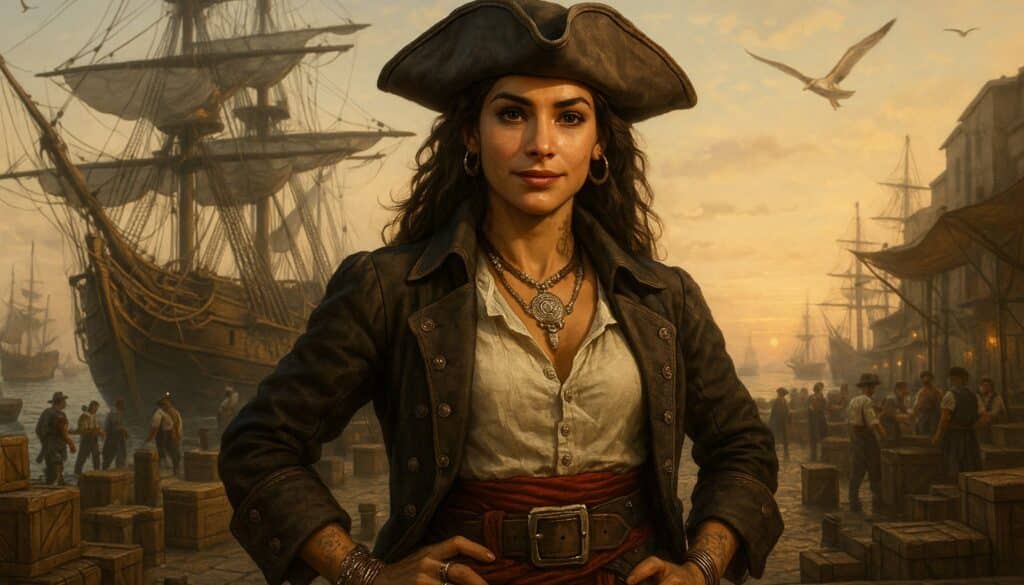
White Plume Mountain by Paul Kidd (Greyhawk)
In the bubbling underbelly of White Plume Mountain, laughter echoes louder than screams. Paul Kidd transforms the familiar murder-hole of classic dungeon crawling into a chaos of quips, slapstick, and flamboyant NPC chapels. Tongue-in-cheek action and outrageous characters keep suspense sharp around the edges but always leave room for humor, even the worst monsters suffer comedic indignity.
Try my AI Tabletop RPG generators...and an extensive library of content!
Dungeon crawls so often cling to tension and dread that levity feels like revolution. Kidd’s novel tosses cantankerous talking swords, jaded adventurers, and socially awkward demon lords into the mix, crafting an environment where absurdity is power. DMs learn from this that a splash of comedy makes the next horror that much more shocking, and that players thrive when their characters can laugh as well as bleed.
Party banter never reads as filler: everyone has a secret, a phobia, or a wild past. Plots twist on misunderstandings, faux pas, and the consequences of bad jokes at worse moments. At the heart, comic relief deepens immersion by granting each NPC quirks and genuine weirdness, not just lines from a module.
Humorous Campaign Ideas
- Silly magical items: luck-based, nonsensical, or with side effects (e.g., “Wand of Uncontrollable Sneezing”)
- Absurdly elaborate villain schemes that backfire spectacularly
- NPCs with grandiose philosophies on life (e.g., the Existentially Anxious Ogre)
- Talking weapons and armor addicted to melodrama
- Playful traps and challenges (giant rubber ducks, sentient pillows, confetti explosions)
- Allies with embarrassing secrets or confusing disguises
- Dungeons as competitions or reality shows for local monsters
- Animal NPCs with human jobs and complicated internal politics
- Vexing riddles whose answers are jokes or puns
- Adventurer “support groups” for coping with failed quests
Daughter of the Drow (Forgotten Realms)
Deep beneath the world’s crust, empathy blooms in poisonous shadow. Daughter of the Drow upends the stock narrative of drow-as-endless-villain, unraveling Eilistraee’s followers, and the moral quagmire of adventurers who crave more than a surface-dweller’s simplicity. The slow transformation of Liriel Baenre explores trust, betrayal, the weight of heritage, and the temptation to surrender to, or rebel against, fate.
For Dungeon Masters, this is a masterclass in character-driven moral complexity, the urge to escape what one was born into, the grind of being misunderstood by all sides, and the dilemmas of betraying family for freedom. Opponents gain motive beyond “evil for evil’s sake,” presenting players with choices that haunt well beyond a campaign’s end. Cultures clash with raw consequence; every encounter can end not just in blood but in questions no sword can answer.
Shades of gray bleed everywhere: a drow longing for sunlight, a surface elf nursing a centuries-old grudge, a party divided by love, prejudice, and unresolved secrets. The Underdark is no longer just a map, it is a crucible for transformation, and the players’ hearts are the iron.
Character-Driven Plot Ideas
- Redemption stories for drow, half-drow, or other “villainous” races
- Moral dilemmas involving loyalty, family, and tradition vs. personal growth
- Alliances built on mutual suspicion, slowly maturing into respect
- Cultural misunderstandings sowing chaos or opening doors to empathy
- Trust issues: double agents, secret sympathizers, or faked villainy
- Surface world prejudice toward Underdark immigrants or defectors
- Cross-cultural romance haunted by old feuds and curses
- Religious splits within drow society as campaign arcs
- Rebellions led by misunderstood “villains” against evil overlords
- Thematic focus on the price of freedom and the wounds of heritage

The City of Ravens (Forgotten Realms)
Cloaks and daggers only tell half the story in Ravens Bluff. The City of Ravens crackles with the energy of a city both beloved and diseased, its alleys slick with schemes and its rooftops alive with the patter of thieves and dreamers. Jack Ravenwild, neither hero nor villain but a master of survival, turns every encounter into a dance of wit, luck, and luck’s vengeful shadow.
Urban adventures demand more than new monsters or sprawling catacombs. They live by vibrant NPCs, gangs with real ambitions, guilds staking territory not with swords but with signatures. The tension of the big con collides with the sorrow of betrayal, and every job is a test of who can talk faster or stab smarter.
Players thrive in such settings, learning that quick thinking, charm, and double-dealing can change the city’s fate as much as any sword or spell. Enemies might become allies, rivals mutter lines of unexpected wisdom, and even a botched heist spirals into ten new opportunities for intrigue.
Urban Adventure Concepts
- Elaborate heists staged in magically protected vaults or noble mansions
- Rival thieves’ guilds pushing the party to pick a side or play both
- Charismatic anti-hero NPCs as unreliable patrons
- Blackmail and rumor as sources of power and leverage
- Secret societies battling for control beneath the city’s notice
- Disguises, false identities, and shapechanging as tools and traps
- The city’s magical bureaucracy as a campaign obstacle or avenue
- Criminal “Robin Hood” figures that complicate the party’s choices
- Gangs with odd codes of honor or rituals (e.g., blood oaths, whispered passwords)
- Law vs. crime narrative where both sides are equally corrupt
Planescape: Torment by ShadowCatboy (Planescape)
Memory flickers like a dying lantern in the floating market. Planescape: Torment does not solve mysteries. It lingers in the asking. Identity, mortality, the meaning of a soul’s persistence; all are grist for the campaign’s mill, rendered in a setting where philosophy breathes as much as magic. Here, even the smallest action reshapes reality, and no decision exists in a vacuum.
Players wander the City of Doors, trailed by past lives they cannot recall and friends whose motives shift with breeze. NPCs form factions based on worldviews, belief itself can crack the sky or shift the city’s geography. Quests rarely solve; they provoke, unsettle, and spark introspection. DMs who borrow these themes grant their players choices with existential weight, where the price of power is the origin and consequence of belief itself.
Campaigns echo with the endless refrain: “What can change the nature of a man?” Sessions become therapy and trial, mythology and confession woven into every encounter.
Philosophical Storytelling Methods
- Player-character amnesia as a central campaign thread
- NPC factions based on competing philosophies (“Might is Right” vs. “Nothing Matters”)
- Mysteries where the answer changes reality itself
- Moral dilemmas with shifting, uncertain repercussions
- Quests that force players to question their own character’s identity and purpose
- Dialogue choices that reshape the setting or NPC attitudes
- “Planar” consequences—actions ripple across dimensions and realities
- Ethical stories built on conflicting loyalties or past lives
- Existential threats: killers who erase memories, beings who challenge reality’s fabric
- Story arcs based on forgiveness, revenge, and redemption over lifetimes
Darkwalker on Moonshae (Moonshae Isles Trilogy, Forgotten Realms)
Fog-shrouded archipelagos rise in the page-turning mist of Darkwalker on Moonshae. The Isles are no mere backdrop, but layered with druidic secrets, insular communities, mysterious ruins, and omnipresent, capricious fey. Celtic folklore pulses beneath every copse and coastline; wilderness is as much a power as any throne.
Exploration fuels much of the magic: players cross storm-tossed seas, broker pacts with ancient spirits, and seek wisdom in groves where the moon herself is worshipped. Civilization never fully subdues the wild. Instead, settlement feels haunted, ephemeral, and always threatened by the powers lurking behind the wind.
Campaigns inspired by Moonshae reward curiosity, respect for the wild, and wary navigation of intertwined natural forces and human cultures. Adventure here tastes of the primal, a song half-forgotten on the breeze.
⚔️ Fantasy RPG Random Tables Books
Make life as a Gamemaster easier…
If you play Dungeons & Dragons, Pathfinder, or other fantasy RPGs, this
RPG random tables series
is packed with encounters, NPCs, treasure, and more. Available in eBook or print—either way, you’ll have a wealth of adventure ideas at your fingertips.
Celtic-Themed Worldbuilding Ideas
- Ancient druidic rituals as narrative milestones or obstacles
- Fey courts and capricious spirits as recurring NPCs
- Mysteries tied to weather, tides, or lunar cycles
- Folk traditions that grant blessings, curses, or hidden information
- Sacred groves and holy wells as adventure hubs
- Kings or chieftains whose legitimacy depends on connection to the land
- Lost islands or sinking ruins beckoning with forbidden secrets
- Wild magic zones: unpredictable spell effects, ancient enchantments
- Generational feuds and vendettas shaping towns and clans
- “Thin places” where reality bends and the supernatural bleeds through
Venom in Her Veins (Forgotten Realms)
Sins slither beneath the surface of Waterdeep’s labyrinthine heart in Venom in Her Veins. Cynric’s tale, poisoned by heritage and hunted by secrets, winds through both city and soul. The narrative pulses with personal stakes; family expectations, monstrous lineage, and choices that throb with regret. Every turn in the plot drips with consequences born of hidden truths and unspoken loyalties.
Character arcs supersede set pieces. Players facing such stories must weigh loyalty against ambition, what to reveal against who might tear them down. DMs earn new tools for sculpting parties whose internal struggles play out as vividly as their public adventures.
Campaigns flourish when character secrets are not just backstory flotsam but central engines for betrayal, reconciliation, and drama. The deeper the wound, the sharper the blade of plot twist.
Character Development and Plot Twist Ideas
- Secret monstrous heritage revealed by bloodlines or magic
- Misunderstood villains: motivations buried beneath social or family pressure
- Sibling rivalries that fuel main questlines
- Identity crises: disguises, poly-cultural upbringings, code-switching
- Tragic betrayal arcs between party members or mentors
- Redemption quests requiring sacrifice or self-denial
- Emotional plot hooks tied to love, revenge, or legacy
- Sudden revelations that upend the party’s trust or alliances
- Hidden cults or organizations blackmailing PCs into impossible decisions
- NPCs seeking forgiveness or running from the shadow of their pasts
HOBGOBLIN by John Coyne
The dice never lie. It’s the players you should watch. HOBGOBLIN captures the pulse of the 1980s moral panic, threading D&D’s wild imagination through the anxiety and horror of adolescence. At the novel’s twisting root grows the question: where does fantasy end and madness begin? Cultural fear hardens into a monster stalking the margins of both game and reality.
Paranoia leaks into every session. Is the evil in the dice, or the frightened hearts of suburbia? Parties here battle not only fictional monsters but parents, teachers, and entire communities convinced the world on their character sheet breeds ruin in the daylight world. The line blurs until the dungeon creeps off the page, and urban legends take up swords.
Campaigns built on this foundation extract horror not from dragons, but from the possibility of becoming the monster everyone dreads. No Elf-king is as terrifying as seeing your party’s madness reflected in the eyes of their own kin.
Horror and Urban Legend Campaign Techniques
- Possession storylines: characters haunted by RPG personas leaking into “reality”
- Urban legends as campaign monsters (killer dice, ghostly game masters)
- Paranoia arcs: in-game consequences for player taboos or societal suspicion
- Supernatural entities that rewrite the boundaries between fiction and fact
- Characters hunted or exiled by their own community
- Dreams, hallucinations, or “fantasy bleed” as traps and clues
- Campaign arcs mimicking famous moral panic cases or real urban legends
- Horror built from routine banality: monsters in malls, schools, or family homes
- Game-within-a-game story mechanics (recursion, unreliable narrators)
- Dramatic confrontations with authority figures or loved ones about “the danger of play”
Integrating Novel Inspirations into Your Campaign
Adaptation demands more than filching plotlines or flavor text. DMs must listen (to their players, to the feel of their campaign) and twist the inspiration until it rings true at the table. Obscure novels thrive when used as a toolkit: borrow a strange ritual, a peculiar NPC, a theme of environmental collapse, and then bend it through the prism of your party’s choices. Flexibility, not fidelity, is the key.
Understand that not every tale fits as-is. Some ideas burn hot as cameos or background lore; others become the spine of a whole campaign arc. The trick is layering: introduce small elements first, see what catches fire in your group’s imagination, and then stoke that flame. The best lore feels like a living part of the world, not a transplanted appendix. Dialogue, NPC gestures, and rumors blend these inspirations naturally; seamless, immersive, and fruitful.
Above all, empower your players within this expanded tapestry. Let their choices and interpretations reweave borrowed myths until they become personal legend. Use the overlooked novel not as a crutch for plotting, but as a springboard for play. In the end, it is the table’s voice that animates even the dustiest page.
Practical Adaptation Table
| Novel | Worldbuilding Lesson | Application in Session |
|---|---|---|
| Haunted Lands Trilogy | Necromancy as bureaucracy and status | Legalized undead, necro-police, court scenes with lich advisors |
| Birthright Series | Bloodline-based, low-magic politics | Inheritance disputes, barter economies, diplomatic councils |
| Chronicles of Athas | Survivalist ethos in a resource-starved world | Track water/food, psionic mutant factions, gladiator arenas |
| I, Strahd | Humanize the villain, goth tragedy | Villain’s diaries, personal NPC loss, tragic public executions |
| Knight of the Black Rose | Cross-setting play/cultural dissonance | Planar travel, lost heroes, warped magic, moral breakdown scenes |
| Cloakmaster Cycle | Spelljammer: ships, stars, mixed crews | Shipboard councils, astral storms, interplanetary politics |
| White Plume Mountain | Comedy, absurd puzzles and magical mishaps | Talkative items, pratfall traps, NPCs with inflated egos |
| Daughter of the Drow | Nuanced outsider perspectives | Allies/antagonists with shifting loyalty, Underdark politics |
| The City of Ravens | Urban intrigue and charismatic rogues | Guild rivalries, layered heists, NPC patron double-crosses |
| Planescape: Torment | Impact of philosophy, fluid identity | Amnesia quests, reality-twisting choices, belief-powered events |
Final Thoughts on Overlooked DND Novels and Worldbuilding
Dungeons & Dragons thrives when the world grows stranger, deeper, and less predictable. Within dusty, little-read novels, Dungeon Masters discover not answers but provocations: customs, tragedies, and rivalries no official sourcebook dares render. These settings do not replace core lore, they flavor it, complicate it, and let every table become a crucible for wholly unique legend. Each narrative, orphaned by popularity, now waits to be revived in living conversation and shared adventure.
More than trivia, these novels offer new avenues for player agency and emotional resonance. Borders shift, spells carry unexpected consequence, and monsters become reflectors of personal and cultural wounds. Through fresh dilemmas, wild new characters, and lore that refuses to resolve neatly, even the most well-worn campaign proves open to reinvention. The world ceases to be passive scenery and becomes co-creator, a dynamic engine powered by overlooked ideas.
So, Dungeon Masters, allow your imagination to break free of the bestsellers. Dig elbow-deep into these buried treasures and resurrect the unremembered, the odd, the sideways. Every session might echo with echoes of the unknown: the pitch-black humor of a jaded bard, the slow-burn politics of a ruined empire, the haunting regret of a villain’s diary. In doing so, transform “just another game” into mythic, memorable storytelling and adventures just as the rebel dreamers in the footnotes once imagined it.


